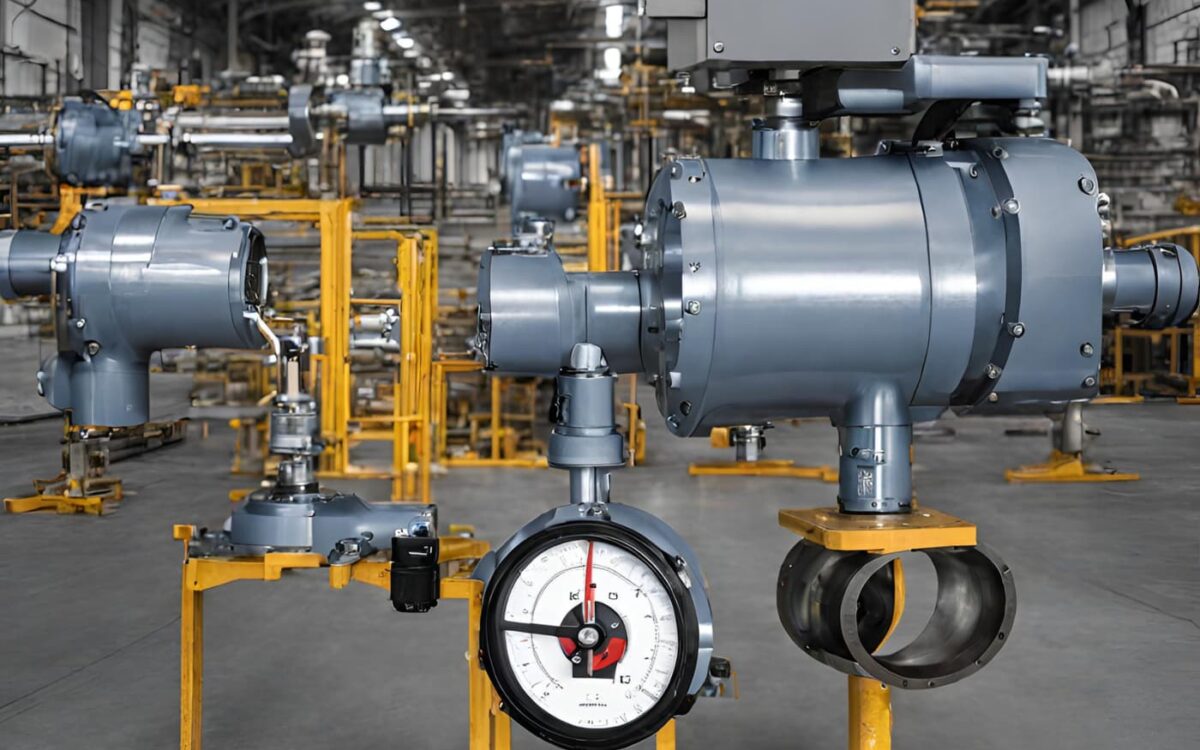When it comes to fluid and gas control in industrial processes, precision and efficiency are non-negotiable. The key to achieving this lies in properly sizing control valves. In this article, we will delve into the essential aspects of control valve sizing, offering insights into the steps, factors, and considerations that make it possible. While we explore this critical topic, we’ll also briefly touch upon the relevance of erie control valves and bray control valves in the context of control valve sizing, without making them the central focus.
Understanding Control Valve Sizing
Control valve sizing is the process of selecting the right valve size to ensure efficient and accurate flow control. It’s a crucial step in designing a system that can meet the required flow rates and pressure drops. Proper sizing ensures that the control valve operates within its designed range, minimizing wear and tear while maximizing performance. It also contributes to energy efficiency and overall system reliability. Whether you’re working with liquids, gasses, or steam, understanding control valve sizing is fundamental to achieving optimal control and minimizing operational issues.
Factors to Consider in Control Valve Sizing
Several factors come into play when sizing control valves. The primary considerations include the required flow rate, pressure drop, and the properties of the fluid or gas being controlled. Flow rate determines the size of the valve, while pressure drop influences the valve’s trim size and type. Fluid properties such as viscosity, density, and temperature impact valve performance. Additionally, the desired control range and the specific process requirements must be taken into account. Accurate data and calculations are essential to ensure that the selected control valve can meet the demands of the application.
Sizing Control Valves: Step-by-Step Guide
Sizing control valves involves a systematic approach. Here’s a step-by-step guide to help you navigate the process:
- Determine the Flow Rate: Calculate the required flow rate based on the process specifications. Consider factors such as maximum and minimum flow rates, normal operating conditions, and any potential variations.
- Calculate the Pressure Drop: Assess the pressure drop across the control valve, taking into account upstream and downstream conditions. This step is crucial for selecting the appropriate valve trim.
- Fluid Properties: Gather data on the fluid properties, including viscosity, density, and temperature. These properties affect the valve’s performance, and accurate information is essential.
- Control Range: Define the required control range for the valve. This range should cover the expected variations in flow and pressure within the process.
- Valve Sizing: Use control valve sizing equations or software tools to select the valve size and trim that meet the calculated flow rate and pressure drop.
- Select the Valve: Based on the sizing results, choose a control valve from a reputable manufacturer that matches the calculated specifications.
- Consider Accessories: Don’t forget to include any necessary accessories, such as positioners or actuators, to ensure proper valve control.
By following these steps, you can confidently size control valves for optimal performance and precise control in your industrial processes.
Erie Control Valves: Sizing and Selection
In control valve sizing, the selection of the right valve is crucial. Erie control valves offer a range of options suitable for various applications. When sizing Erie control valves, consider factors such as the valve type, trim design, and actuator type. Erie control valves are known for their durability and precision, making them a reliable choice for critical control applications. Additionally, their compatibility with a wide range of fluids and gasses makes them versatile and adaptable to diverse industrial processes.
Bray Control Valves: Sizing and Application
Bray control valves are renowned for their innovative design and performance. When sizing Bray control valves, focus on matching the valve type and trim to the specific requirements of your application. Bray control valves excel in applications where precise control, reliability, and durability are essential. Their comprehensive range of products includes options suitable for various industries, from oil and gas to water treatment. By selecting the right Bray control valves and properly sizing them, you can achieve optimal control and system efficiency.
Challenges and Solutions in Control Valve Sizing
Control valve sizing can present challenges, especially when dealing with complex processes or non-standard conditions. Common challenges include inaccuracies in fluid property data, variations in operating conditions, and the need for precise control. To address these challenges, rely on accurate data, utilize advanced sizing software, and consult with experienced engineers or valve specialists. Additionally, consider the potential for future changes in process conditions and factor them into your sizing calculations. Regular maintenance and performance monitoring can help ensure that control valves continue to operate optimally over time.
Importance of Proper Sizing in Performance
Proper sizing of control valves is paramount to achieving optimal performance in industrial processes. A well-sized control valve ensures that the system operates within its designed parameters, minimizing issues such as cavitation, flashing, or excessive wear. It contributes to energy efficiency by preventing unnecessary pressure drops and ensures accurate control of flow rates and process variables. Properly sized control valves also enhance system reliability, reducing the risk of unexpected shutdowns or costly maintenance. In summary, control valve sizing is not just a technical detail but a critical factor in achieving efficiency, accuracy, and reliability in industrial processes.
Conclusion
In conclusion, sizing control valves for optimal performance is a fundamental aspect of industrial fluid and gas control. Understanding the factors that influence sizing and following a systematic approach are key to selecting the right control valve. Erie control valves and Bray control valves offer reliable options for various applications, making them valuable choices in the world of control valve sizing. By addressing challenges, considering fluid properties, and emphasizing the importance of proper sizing, industries can ensure efficient and precise control in their processes.
